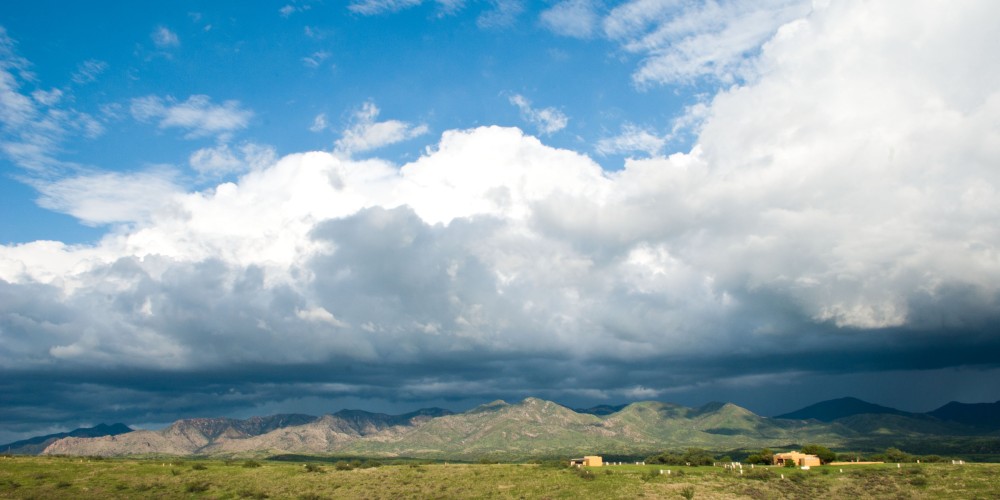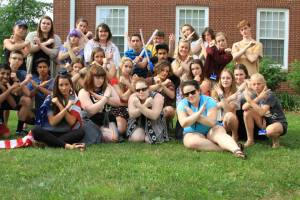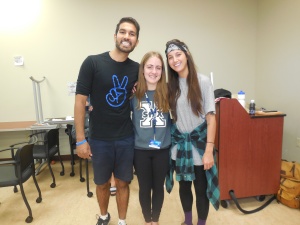Lush, sprawling green hills, bountiful fruit trees, and a sunrise to contest all others is not what comes to the minds of most when thinking about the state of Arizona, but I promise I’m not making it up! I recently returned from a nine day leadership program in Windsong, Arizona, where this description lives true. Needless to say, I was shocked to step out of the van to so much green! The mountains from the photograph are known as “the sky islands”, which I think suits their sudden presence so beautifully, and the landscape you see above is also referred to as “The Borderlands” – serving as a meeting place for two countries, two mountain ranges, and two deserts – and though it is beautiful, there is much that is broken there as well; I’ll expand on that later.
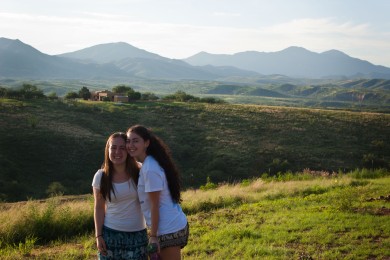
Enjoying the views on day one!
We had two opportunities to really dive into permaculture, first of all on the property where we were staying, building ‘tubs’ for planting. Being desert, the ground in Arizona is very dry, and so doesn’t absorb water quickly – the tubs we helped dig will act as barriers between the water and the nearby hills, keeping it from draining away, and allowing it to sink into the ground. This saves so much water, as it means that no one will need to water the plants planted there – at least not as frequently!
Our second big experience with permaculture came with a visit to Deep Dirt Farm Institute, a project with a pretty inspiring story behind it! After 19 years of a successful real-estate career in California, Kate, the farm’s owner and visionary, realized that the life she was living wasn’t good for her health – it was quite literally making her sick – and so she decided to do something drastic; she moved to a plot of land in the middle of the Arizona desert and began to build a farm, out of garbage. At Deep Dirt, one man’s trash really is another woman’s treasure! Using satellite dishes, old metal siding, and pipes, her and her husband (a welder by trade), have created a sustainable home and farm, which is also absolutely beautiful! At Kate’s farm, we had the chance to get our hands dirty building a water catchment system in the dry river bed.
We also spent a great amount of time during our stay learning about the social justice issues that face the area’s population, and this is where we start to get into the broken more so than the beautiful. It’s taken me a full week to sit down and write this blog, and that is mainly because my brain is still processing everything that I witnessed and learned during my time in Windsong. So, I’ve finally decided to start here:
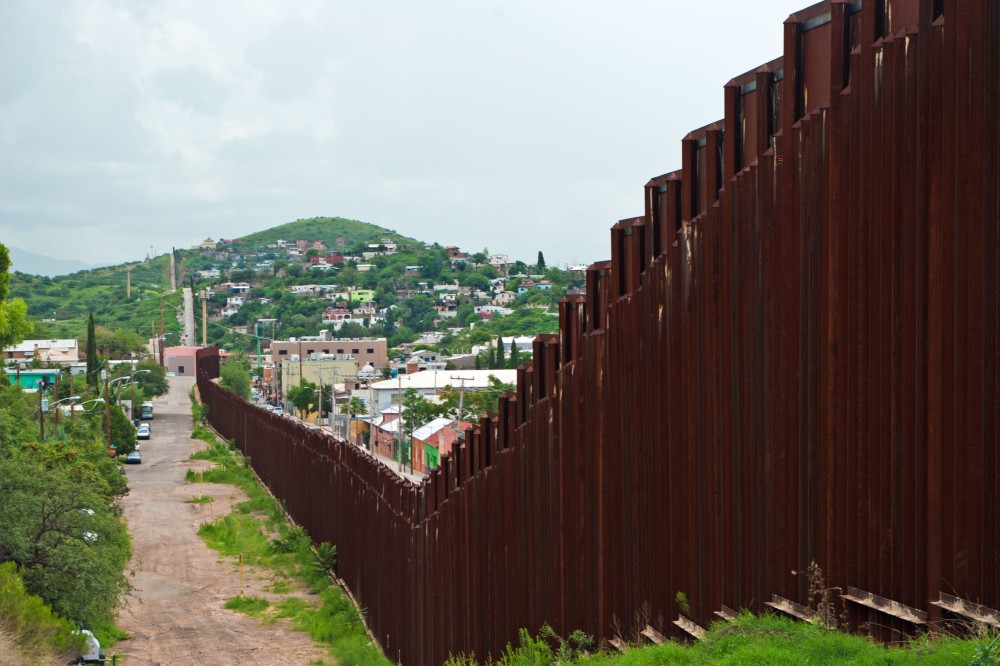
The Nogales, Arizona – Nogales, Mexico border.
This is what I call a wall.
Since 1918, the city of Nogales has been divided in two – split straight down the center by American border patrol. Families, friends; sorted by mere chance onto either side. This was no security measure, just pure discrimination. Supposedly to keep out Mexican terrorists, the wall serves to keep families apart instead. To prove the absurdity, the only two recorded terrorist attacks committed by immigrants to the United States were committed by Canadians, and I don’t see walls ‘protecting’ our shared borders.
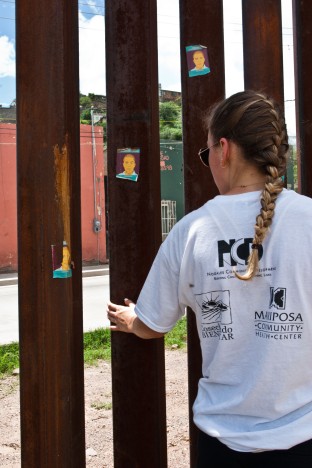
Standing where Jose Antonia, 16, was shot and killed by border patrol.
Speaking with border patrol later in the week it was clear again that their mentality towards the wall and its purpose differed drastically from ours – the agent strongly reinforcing the idea that it was a fence, not a wall, and that racial profiling and discrimination weren’t present in border work, something we witnessed first hand as being entirely false.
Contributing to the great divide between two countries is NAFTA, having created a partnership benefiting all parties save Mexico. As a result of unfair division of resources and power, many on the Mexican side of the border live on less than $3 a day, earned working in factories exploiting cheap labour. Earned working in factories that produce so much of what we consume on a daily basis. The conditions are so terrible that many choose to seek out a new life, chasing the ever elusive American Dream across the border – only to be shot, arrested, or turned away; and that’s only if they survive the grueling heat of the desert during their travels there.
Only two in five survive the journey.
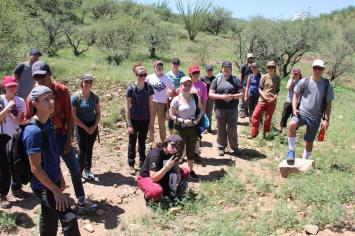
On the migrant trail
Later in the week, we arrived at the city courthouse to witness something called Project Streamline. As its name suggests, the project’s goal is to streamline the process of putting illegal immigrants through the court system. Sitting at the back of the courtroom, we watched as 34 immigrants were asked two questions each: “yes” or “no” to confirm their name, age, and place of residency, and then “yes” or “no” to whether they agreed with statement of “guilty”. With eight immigrants called up at a time – two per microphone -the entire process took thirty minutes.
All of us sitting at the back were shocked at how dissociated and inhumane the process was – not even allowing the immigrants to say their names or the word “guilty” out loud. Not to mention the fact that each of the immigrants was shackled, despite no indication of violent tendencies. When speaking with the judge after the trial, I asked for clarification on the reason behind the shackles, and had to push for further explanation after the judge’s initial one word response. Finally, I was told that no, none of the immigrants had shown any tendencies towards violence – the court just wouldn’t pay for the two marshals per prisoner it would require to allow them to be unshackled. Coming to America in search of the American dream: safety, security, and financial stability, and greeted with shackles, a criminal record, and deportation – without even being granted the dignity of speaking their own name in court.
It’s absurd how much meaning we’ve managed to give to borders, when ultimately they are a concept of human imagination, and for the most part hold no physical presence. I ask you to consider, what would a world without borders look like? We were, after all, at one point in time, one country, and one people. And as a wise man named Pastal said to me during my time in Arizona, “we don’t cross the border[s], the border crossed us”.
Where there is struggle, there is also strength, and the communities of Tucson and Patagonia have it in droves. We had the chance to visit a few different projects exemplifying this strength, one of which was Mexicayotl – a charter school that, in the words of Chris Tse is “giving the finger to the system”, and doing quite a good job of it! In Arizona, despite its obvious proximity to the border, it is illegal for schools to teach in both English and Spanish. However, Balty, the founder of Mexicayotl, found a loophole – being a charter school, the school is allowed to teach its students bilingually. The school also teaches about the area’s native history surrounding the Mashika tribes, who colonized North America well before Christopher Columbus, but who are ignored in American textbooks. The students answer to a conch shell instead of a bell, and take part in traditional Mashika dance – they are also the only American school to have a traditional headdress on display in their hallway.
During our visit to the school, Balty introduced us to the framework of leadership as it is taught in their school: conócete, conóceme, relaciónate, trabaja. Or, in English: know yourself, know others, inter-relate, work together – a framework that we came back to frequently throughout our leadership training, and that makes an appearance in the school’s mission: “learning because of who we are, in two languages, to become critical thinkers, within a process of learning through application, resulting in the full spectrum of “interculturalism”.
Another group doing some amazing social justice work is the Nogales Mercado Farmer’s Market – a group of locals who came together to solve a problem in their community: access to good, fresh, nutritious food. Built around a set of train tracks, tons and tons of fresh produce crosses through Nogales on its way from Mexico everyday, headed for larger production centers across Arizona – but never stopping in Nogales. Seeing this, this group of locals rallied local farmers and artisans to create a beautiful farmers market in the city’s center!
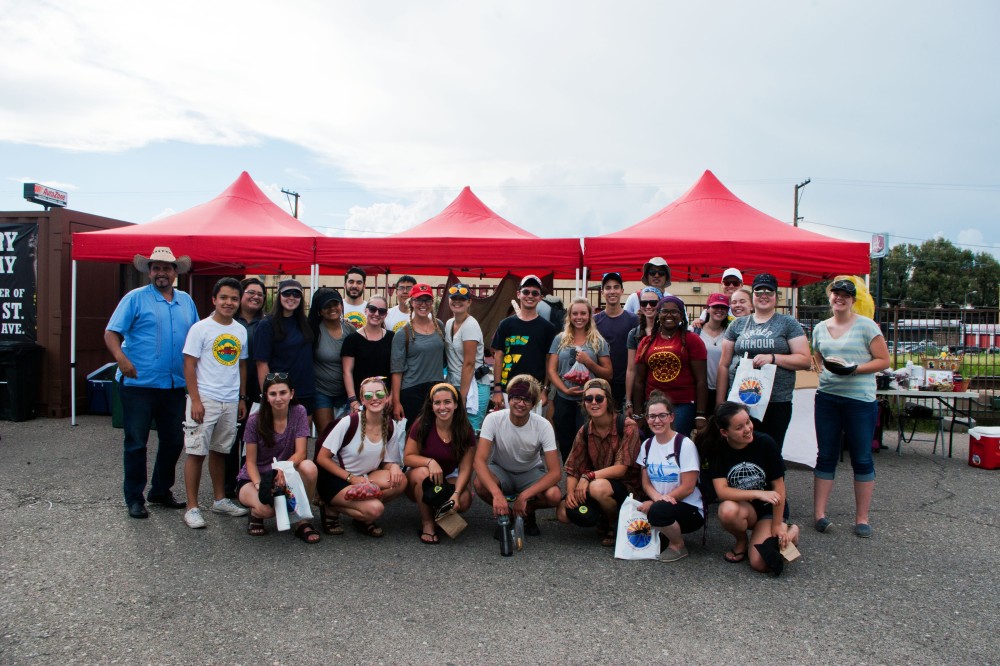
At the market!
I hope that in reading this you have learned something, and that you will take away a greater knowledge of the issues that are affecting North America and the world – maybe something here will even inspire you to further your research, or take action.
That’s all for now, stay tuned for my next adventure!
